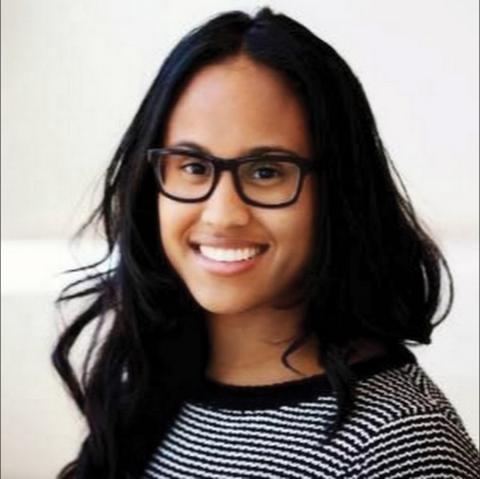Being on the Ballot
Alumnae-founded initiative aims to improve representation of women and minorities in government.
Arielle McInnis-Simoncelli ’11 had not been politically involved outside of student government and voting, but the vitriol and divisive rhetoric of the 2016 presidential election changed that. At a professional conference about racial justice that took place two days after the election, she attended a seminar about the importance of reflective democracy.
Her work in Washington, D.C., at a global nonprofit is about reducing health inequities by helping policymakers understand the often-overlooked connections between policies in sectors outside of health and the health outcomes of communities. The seminar got her thinking about how policymakers’ identities impact the policies they develop.
“In thinking about who represents us, I was inspired to do something,” says Simoncelli, an anthropology major who received a master’s in public health from the University of Michigan School of Public Health. “Everyone was ready to march (in January) and to do whatever they could to get more voices at the table. This is what I was able to come up with.”
By highlighting the stories of women, people of color, underrepresented religious groups, those in the LGBTQI community, and other nontraditional candidates, Simoncelli hopes to help build a more reflective democracy—one in which elected officials look like their constituents and reflect their lived experiences.
In June, she launched Be on the Ballot, an initiative to demystify the process of running for office and empower underrepresented people to run. “It shows them that others who look like them or have similar life circumstances have overcome challenges, such as poverty and discrimination, to campaign for office,” she says.
The nonpartisan Be on the Ballot focuses on down-ballot races, including school boards, city councils, and state legislatures. Simoncelli interviews people after their campaigns have ended, win or lose, when they have perspective about their successes and failures. To demystify the process of running, she asks simple questions, such as: What were the biggest challenges you faced? How did you fundraise? How did you manage the endorsement process? After transcribing the interviews, she posts the transcripts online.
Among those she has featured are Lan Diep, the first Vietnamese-American elected to the San José, California, City Council; State Rep. Abdullah Hammoud, (D-Dearborn, MI), the first Arab-American Muslim to hold his seat in the Michigan House of Representatives; and Stacey Abrams, the former Georgia House Minority Leader, who might become the first Black female governor in the country.
During the racial equity conference, Simoncelli says she was confronted with the demographics of this country’s elected officials. According to the website, WhoLeads.us, women make up 51 percent of the U.S. population and men, 49 percent. Sixty-two percent are white, and 38 percent are people of color.
Yet, in 2017, women held only 20 percent of congressional seats, and women of color comprised 7 percent of all 535 members of Congress, according to the Center for American Women and Politics, Eagleton Institute of Politics at Rutgers University.
“I think Be on the Ballot challenges that status quo in highlighting stories that haven’t been told,” Simoncelli says. “There is plenty of room to inform the decisions that are happening in your community.”
Published on: 03/16/2018
